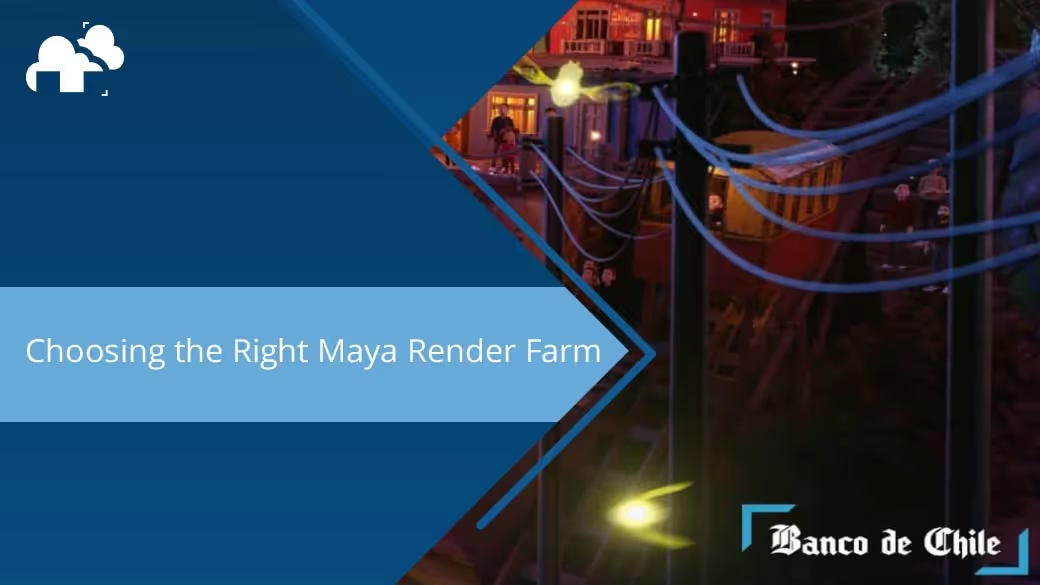
Rendering in Autodesk Maya is a demanding task that requires powerful resources, particularly when working with high-poly models, detailed textures, or complex lighting setups. To speed up this process, a Maya render farm can be a game-changer, allowing you to distribute rendering across a network of powerful machines. However, not all farms are created equal. Choosing the best one for your needs depends on several factors, from software compatibility to pricing structures. Here’s a guide to help you navigate the essential considerations when selecting a Maya render farm.
One of the first things to check when choosing a Maya render farm is whether it fully supports the render engine and the specific version you're using. Compatibility with third-party engines like V-Ray, Redshift, or Renderman is important, especially for artists working on specialized projects. Additionally, if you’re using plugins such as XGen or Bifrost, make sure the render farm supports these, as they are crucial for handling simulations, hair, fur, and fluids.
Choosing a farm with direct integration into Maya, through plugins or submission tools, can save you hours of hassle. Many Maya render farms provide one-click solutions or pre-configured templates that allow you to upload your project directly from the Maya interface, streamlining the entire process.
Render speed is often the top priority when considering a Maya render farm. Render farms allow you to access hundreds or even thousands of CPU and GPU cores, drastically reducing the time it takes to complete your renders. Depending on the complexity of your project, you may require different types of hardware. For instance, farms equipped with high-performance CPUs are ideal for CPU-bound render engines like Arnold, while those offering top-tier GPUs are better suited for GPU-accelerated engines like Redshift.
It’s also important to look at how many rendering nodes are available. Farms with more nodes can process large animations faster, and some Maya render farms allow you to prioritize certain jobs, ensuring time-sensitive renders are completed more quickly.
Understanding the pricing model of a Maya render farm is essential to avoid any surprises down the line. Farms typically offer several models, including pay-per-minute or pay-per-hour options, which are calculated based on the amount of time your scene spends rendering on their machines. This is ideal for short or small projects but can become expensive for longer renders. For larger or ongoing projects, consider farms that offer subscription-based pricing or prepaid plans, which can provide better cost efficiency in the long run.
Many Maya render farms also offer free trial credits, giving you the opportunity to test their service before committing. Additionally, some farms provide cost estimation tools where you can input your scene details to calculate an estimated cost based on factors like poly count, lighting complexity, and render time.
Usability plays a key role in choosing a Maya render farm. You want a service that integrates smoothly with your workflow, ideally offering plugins that allow you to submit jobs directly from Maya. Farms with a clear and intuitive job management dashboard make it easy to monitor the progress of your renders, adjust priorities, or tweak settings without resubmitting entire jobs.
Customer support is equally important, especially for complex projects. Look for Maya render farms that provide 24/7 live chat or phone support, particularly if you work on tight deadlines. In addition to customer service, farms with detailed guides or tutorials specifically for Maya users can help you avoid common pitfalls and troubleshoot problems..
When you upload your assets to a Maya render farm, security is paramount. Ensure that the farm uses SSL encryption for all file transfers and offers clear data retention policies. You want to know that your files will be securely deleted after your job is complete. This is especially important if you’re working with sensitive or proprietary client work. Some farms even offer confidentiality agreements or NDAs for commercial projects, adding an extra layer of security.
Finally, scalability is another key factor. As your projects grow in complexity, you need a Maya render farm that can scale with your needs. Some farms offer cloud-based scalability, dynamically allocating more resources as your project demands increase. This is particularly useful if you're working on feature-length animations or large-scale visual effects shots.
Farms that offer auto-scaling can adjust resources based on the complexity of the job, allowing you to optimize for both performance and cost. Flexibility in scaling means that whether you’re an independent artist today or a studio with increasing project loads, your render farm can grow alongside you.
Choosing the right Maya render farm involves balancing various factors: from compatibility with Maya and its plugins to the farm’s hardware, pricing structure, usability, security, and scalability. By considering these elements, you can ensure that your renders are completed efficiently and within budget, allowing you to focus on creating the best possible work without being bogged down by technical limitations. Whether you’re working on a solo project or a studio production, the right Maya render farm will not only save time but also elevate the quality of your output.